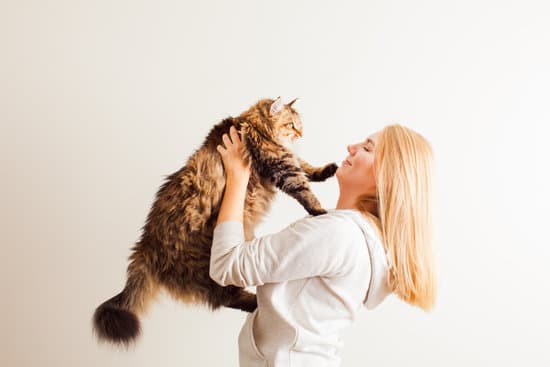10 Tips: How to Exercise an Overweight Dog
Exercising an overweight pooch can be a challenging task for pet owners. However, it is essential to ensure that your furry friend maintains a healthy weight to avoid potential health complications. Overweight poochs are at a higher risk of developing heart disease, diabetes, and joint problems. Therefore, it is crucial to incorporate exercise into their daily routine to improve their overall health and well-being.
While it may seem daunting to exercise an overweight dog, there are several tips that pet owners can follow to make the process easier and more enjoyable. These tips include starting slow, incorporating fun activities, and monitoring their progress. By following these tips, pet owners can help their poochs shed excess weight and improve their quality of life. In this article, we will explore ten tips on how to exercise an overweight pooch and help them live a happier and healthier life.
Understanding Canine Obesity

Health Risks for Overweight Dogs
Being overweight or obese can have serious health implications for poochs. It can lead to a range of health problems, including:
- Diabetes
- Joint problems
- Heart disease
- Respiratory problems
- Reduced lifespan
Causes of Weight Gain
Understanding the causes of weight gain in poochs is important in preventing and treating obesity. Some common causes include:
- Overfeeding: feeding poochs too much or giving them too many treats can lead to weight gain.
- Lack of exercise: poochs that do not get enough exercise are more likely to become overweight.
- Breed: some breeds are more prone to obesity than others.
- Age: older dogs are more likely to become overweight.
It is important to work with a veterinarian to develop a weight loss plan that is right for your pooch. This may include changes in diet, exercise routines, and medication. With the right care and attention, overweight poochs can achieve a healthy weight and live a longer, happier life.
Assessing Your Dog’s Fitness Level

Consulting with a Veterinarian
Before starting an exercise program for an overweight pooch, it is important to consult with a veterinarian. A veterinarian can assess the dog’s overall health and provide recommendations for exercise based on the pooch’s individual needs.
During the consultation, the veterinarian may check the dog’s heart rate, breathing, and overall physical condition. They may also recommend specific exercises or activities based on the pooch’s age, breed, and weight.
Determining a Starting Point
Once the veterinarian has given the go-ahead for exercise, it is important to determine a starting point for the pooch’s fitness level. This can be done by assessing the dog’s current activity level and gradually increasing the amount of exercise over time.
Some ways to assess the dog’s current activity level include monitoring their daily walks, playtime, and overall energy level. It is important to start with low-impact exercises, such as short walks or gentle playtime, and gradually increase the intensity and duration of the exercise as the pooch’s fitness level improves.
It is also important to monitor the dog’s progress regularly and adjust the exercise program accordingly. This can help prevent injury and ensure that the pooch is getting the appropriate amount of exercise for their individual needs.
Remember, every dog is different, and it is important to tailor the exercise program to meet the specific needs of each individual pooch. With the help of a veterinarian and a gradual approach, overweight dogs can safely and effectively improve their fitness level.
Creating an Exercise Routine

Setting Realistic Goals
Before starting an exercise routine for an overweight poo, it is important to set realistic goals. The goals should be achievable and not too ambitious. It is recommended to start with short and easy exercises and gradually increase the intensity and duration. The pooch’s age, weight, and overall health should be taken into consideration when setting goals.
Types of Suitable Exercises
There are various types of exercises that can be suitable for overweight poochs. Walking is a great exercise that can be easily incorporated into a daily routine. Swimming is also a low-impact exercise that can be beneficial for overweight poochs. Other activities such as playing fetch and agility training can also be great exercises for overweight dogs. It is important to choose exercises that the pooch enjoys and will be willing to participate in.
Monitoring Progress
Monitoring progress is important to ensure that the exercise routine is effective. Keeping a record of the pooch’s weight, body measurements, and exercise routine can be helpful in tracking progress. It is important to note any changes in the pooch’s behavior and overall health. If the pooch is not making progress, it may be necessary to adjust the exercise routine or seek advice from a veterinarian.
In summary, creating an exercise routine for an overweight pooch requires setting realistic goals, choosing suitable exercises, and monitoring progress. It is important to remember that consistency and patience are key in achieving success.
Exercise Tips and Strategies
Incorporating Playtime
One of the best ways to exercise an overweight dog is through playtime. Playing fetch or tug-of-war with your pooch can be a fun and effective way to get them moving. You can also try hiding treats or toys around the house or yard to encourage your pooch to move around and explore.
Keeping Your Dog Motivated
It’s important to keep your dog motivated during exercise to ensure they stay engaged and continue to make progress. One way to do this is by using positive reinforcement, such as treats or praise, to reward your dog for their efforts. You can also try varying the type of exercise you do with your pooch to keep things interesting and prevent boredom.
Adjusting Intensity and Duration
When exercising an overweight dog, it’s important to start slow and gradually increase the intensity and duration of the exercise. This will help prevent injury and ensure your dog is able to keep up with the exercise. You can also adjust the intensity and duration of the exercise based on your dog’s age, breed, and overall health. It’s important to consult with your veterinarian before starting any new exercise routine with your dog.
By incorporating playtime, keeping your pooch motivated, and adjusting the intensity and duration of the exercise, you can help your overweight dog get the exercise they need to maintain a healthy weight and live a happy, active life.
Nutrition and Weight Management

Balanced Diet for Overweight Dogs
Maintaining a balanced diet is crucial for an overweight dog’s weight loss journey. Feeding them the right amount of quality food can help them achieve their ideal weight. The diet should include high-quality protein, fiber, and complex carbohydrates. The protein should come from lean meat sources such as chicken, turkey, or fish. Fiber can be found in vegetables like broccoli, carrots, and green beans. Complex carbohydrates can be found in sweet potatoes, brown rice, and whole-grain bread.
It is important to remember that the diet should be tailored to the individual dog’s needs. Consultation with a veterinarian or a professional dog nutritionist can help determine the right amount of food and the right kind of food to feed your dog.
The Role of Treats in Training
Treats can be an effective tool in training an overweight dog, but it is important to use them in moderation. Treats should be used as a reward for good behavior and not as a substitute for meals. It is recommended to use low-calorie treats or to cut treats into small pieces to reduce calorie intake.
In addition, treats should not make up more than 10% of the dog’s daily calorie intake. Overfeeding treats can lead to weight gain and can hinder the dog’s weight loss progress.
Overall, a balanced diet and controlled treat intake can help an overweight dog achieve their ideal weight. Consultation with a professional can provide more specific recommendations for individual dogs.









